Mapping neural circuits with activity-dependent nuclear import of a transcription factor
- PMID: 22236090
- PMCID: PMC3357894
- DOI: 10.3109/01677063.2011.642910
Mapping neural circuits with activity-dependent nuclear import of a transcription factor
Abstract
Abstract: Nuclear factor of activated T cells (NFAT) is a calcium-responsive transcription factor. We describe here an NFAT-based neural tracing method-CaLexA (calcium-dependent nuclear import of LexA)-for labeling active neurons in behaving animals. In this system, sustained neural activity induces nuclear import of the chimeric transcription factor LexA-VP16-NFAT, which in turn drives green fluorescent protein (GFP) reporter expression only in active neurons. We tested this system in Drosophila and found that volatile sex pheromones excite specific neurons in the olfactory circuit. Furthermore, complex courtship behavior associated with multi-modal sensory inputs activated neurons in the ventral nerve cord. This method harnessing the mechanism of activity-dependent nuclear import of a transcription factor can be used to identify active neurons in specific neuronal population in behaving animals.
Figures
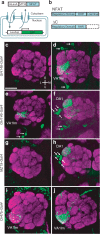
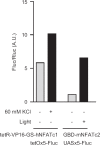

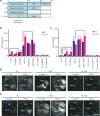
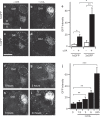
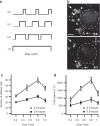
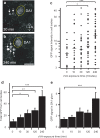

Similar articles
-
Distinct activation properties of the nuclear factor of activated T-cells (NFAT) isoforms NFATc3 and NFATc4 in neurons.J Biol Chem. 2012 Nov 2;287(45):37594-609. doi: 10.1074/jbc.M112.365197. Epub 2012 Sep 12. J Biol Chem. 2012. PMID: 22977251 Free PMC article.
-
Zinc and the cytoskeleton in the neuronal modulation of transcription factor NFAT.J Cell Physiol. 2007 Jan;210(1):246-56. doi: 10.1002/jcp.20861. J Cell Physiol. 2007. PMID: 17044076
-
Nuclear translocation and activation of the transcription factor NFAT is blocked by herpes simplex virus infection.J Virol. 2001 Oct;75(20):9955-65. doi: 10.1128/JVI.75.20.9955-9965.2001. J Virol. 2001. PMID: 11559828 Free PMC article.
-
NFAT signaling in neural development and axon growth.Int J Dev Neurosci. 2008 Apr;26(2):141-5. doi: 10.1016/j.ijdevneu.2007.10.004. Epub 2007 Nov 17. Int J Dev Neurosci. 2008. PMID: 18093786 Free PMC article. Review.
-
[Functional roles of constitutively active calcineurin in delayed neuronal death after brain ischemia].Yakugaku Zasshi. 2011 Jan;131(1):13-20. doi: 10.1248/yakushi.131.13. Yakugaku Zasshi. 2011. PMID: 21212608 Review. Japanese.
Cited by
-
Leucokinin and Associated Neuropeptides Regulate Multiple Aspects of Physiology and Behavior in Drosophila.Int J Mol Sci. 2021 Feb 16;22(4):1940. doi: 10.3390/ijms22041940. Int J Mol Sci. 2021. PMID: 33669286 Free PMC article. Review.
-
Response of the microbiome-gut-brain axis in Drosophila to amino acid deficit.Nature. 2021 May;593(7860):570-574. doi: 10.1038/s41586-021-03522-2. Epub 2021 May 5. Nature. 2021. PMID: 33953396
-
Odorant Responses and Courtship Behaviors Influenced by at4 Neurons in Drosophila.PLoS One. 2016 Sep 12;11(9):e0162761. doi: 10.1371/journal.pone.0162761. eCollection 2016. PLoS One. 2016. PMID: 27617442 Free PMC article.
-
Consolidation of Sleep-Dependent Appetitive Memory Is Mediated by a Sweet-Sensing Circuit.J Neurosci. 2022 May 4;42(18):3856-3867. doi: 10.1523/JNEUROSCI.0106-22.2022. Epub 2022 Mar 31. J Neurosci. 2022. PMID: 35361706 Free PMC article.
-
Descending GABAergic pathway links brain sugar-sensing to peripheral nociceptive gating in Drosophila.Nat Commun. 2023 Oct 16;14(1):6515. doi: 10.1038/s41467-023-42202-9. Nat Commun. 2023. PMID: 37845214 Free PMC article.
References
-
- Antony C, Jallon JM. The chemical basis for sex recognition in Drosophila melanogaster. J Insect Physiol. 1982;28:873.
-
- Ashraf SI, McLoon AL, Sclarsic SM, Kunes S. Synaptic protein synthesis associated with memory is regulated by the RISC pathway in Drosophila. Cell. 2006;124:191–205. - PubMed
-
- Baker BS, Taylor BJ, Hall JC. Are complex behaviors specified by dedicated regulatory genes? Reasoning from Drosophila. Cell. 2001;105:13–24. - PubMed
-
- Bartelt RJ, Schaner AM, Jackson LL. Cis-vaccenyl acetate as an aggregation pheromone in Drosophila melanogaster. J Chem Ecol. 1985;11:1747–1756. - PubMed
Publication types
MeSH terms
Substances
Grants and funding
LinkOut - more resources
Full Text Sources
Other Literature Sources
Molecular Biology Databases
